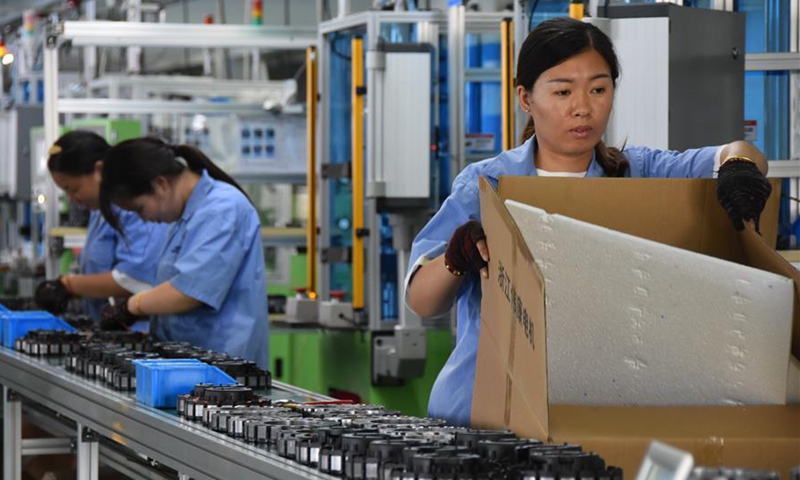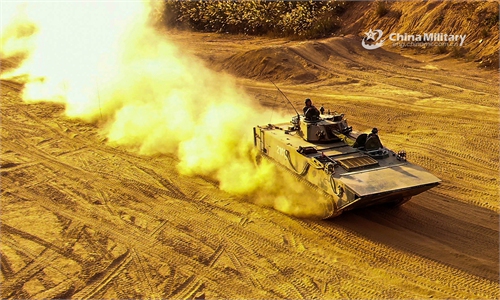
Employees work at a workshop of an electrical machinery company in Huzhou, east China's Zhejiang Province, Sept. 3, 2020. In the first half of the year, Huzhou realized a GDP of 145.3 billion yuan(about 21.2 billion U.S. dollars), up 0.5% year on year. The total fiscal revenue reached 37.73 billion yuan(about 5.5 billion U.S. dollars), up 3% year-on-year. (Xinhua/Zheng Mengyu)
Cai Fang, Vice-President of the Chinese Academy of Social Sciences (CASS) who is also a member of the central bank's policy commission, said that China should prevent the negative spillover effect to be caused by the US' huge fiscal spending, as the two giant economies have a time difference in economy recovery, and in the scale of their respective stimulus plans.
Cai noted that the fact China is the first major economy that has recovered from the pandemic and served to boost China's export and address gaps in the broken industrial chain. However as other countries such as the US start to recover now, the unique export opportunities that benefit China many wane.
He warned that when the world gets back to normalcy, China should be aware the global recovery is very uneven, with many economies saw low inflation rate, low interest rate, low growth rate, aging population and higher debt.
On the other hand, that fact that China's recovery of domestic consumption power has lagged behind a rebound in industrial production, and, the sluggish domestic consumption may also pose a long-term risky factor.
He said that while the US hands out cash to its resients, China put its priority on work resumption and reopening the factories, making China's second industry recovering at a faster rate than the services sector.
Cai predicts that China's total population will likely peak before 2025 and subsequent drop in the population growth rate will increase adverse impact on consumer demand.
He believes that there is no other way out but to cultivate a significant middle-income consumption group. "If we cannot guide the economy back to the right track through a large-scale recovery of domestic consumption, the problem of population aging may come in earlier," he said.
Global Times

